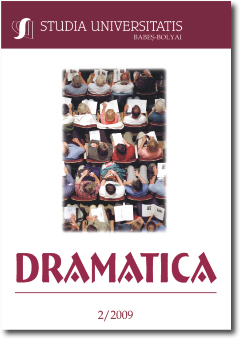TADEUSZ KANTOR ET LE THÉÂTRE JUIF
TADEUSZ KANTOR AND THE JEWISH THEATRE
Author(s): Béatrice Picon-VallinSubject(s): Theatre, Dance, Performing Arts
Published by: Studia Universitatis Babes-Bolyai
Keywords: Hebraic and Yiddish theatre; The Dibbouk; Isaac Perets; The Night in the Old Market; Hassidism; rituals; processions; dance in a circle.
Summary/Abstract: Tadeusz Kantor and the Jewish Theatre. The paper discusses the sources of Tadeusz Kantor’s “Theatre of Death”. One of the main influences seems to have been the Jewish theatre – both Hebraic, and Yiddish. First The Dybbuk that T. Kantor saw in 1938 in the interpretation of Habima Hebraic theatre, directed by a Russian director (E. Vakhtangov) and, less known, the Yiddish play by Isaac Perets, The Night in the Old Market (written around 1907), which was directed in 1925 in Moscow at the GOSET by A. Granovski (European tours in 1928; publication of a book with many photographs in Germany in 1928). The detailed analysis of the structure of the play, of the stage directions, of the characters’ actions gives some keys to the unique theatrical world of T. Kantor. Without a precise plot, the play presents the return of dead people to a little town where they meet the living. The scenic actions are recurrent ritual figures, such as processions or round dances (dances in a circle), representing the leit-motive of the kantorian performances.
Journal: Studia Universitatis Babes-Bolyai - Dramatica
- Issue Year: 2012
- Issue No: 1
- Page Range: 63-74
- Page Count: 12
- Language: French

